
Are spam messages wasting your agents’ time and diverting them away from your customers? Spam management can help you clear the clutter so that you can focus on your customers. In this article, you’ll learn what spam is, how it affects businesses and the strategies for managing spam over instant messaging.
What is Spam?
Spam refers to unwanted messages that are sent through various communication channels. It is a common nuisance and can be found in different forms across several platforms, including instant messengers like WhatsApp, Viber and Telegram, email, social media, blogs and forums.
These messages contain all kinds of content. They can come in the form of promoting products, services or scams. While spam is annoying, it also poses a serious problem for businesses that receive it. So, what happens when businesses don’t implement spam management strategies?
What is the Impact of Spam on Businesses?
Spam affects everyone. In fact, about half of email traffic is spam. The high volume of messages alone is concerning, but the lack of spam management will have other effects that it has on businesses.
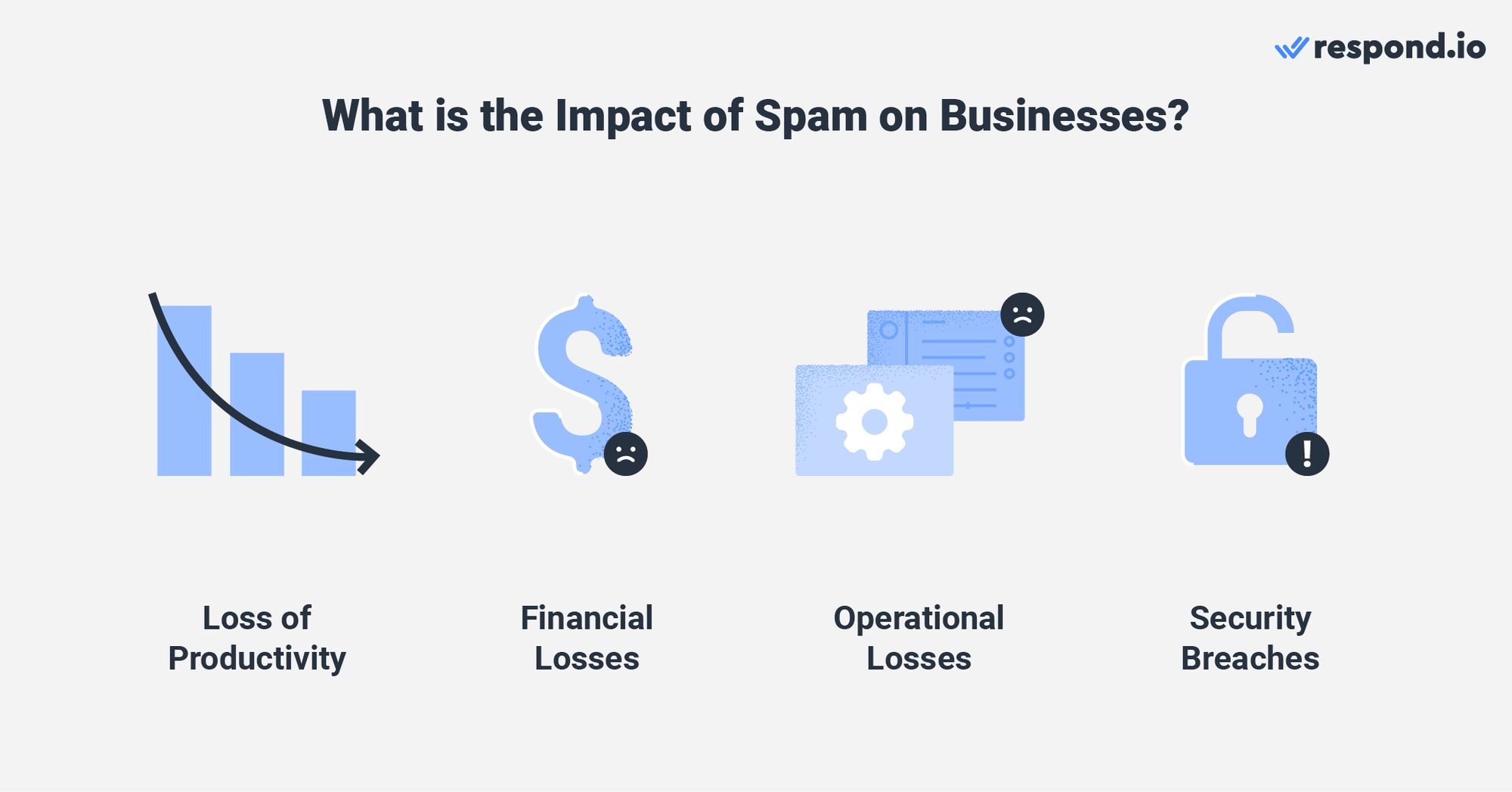
It can impede productivity, lead to missed opportunities, disrupt operations and jeopardize data security. Let’s explore these issues in further detail.
Spam Over Instant Messaging: Loss of Productivity
One of the major issues with spam messages is that they waste valuable time and resources. Agents have to sift through unwanted messages to identify and address legitimate ones. This is time-consuming and it diverts their focus away from customer needs.
Furthermore, agents may also have to dedicate extra time to report spam messages to their IT or security teams. While reporting spam is essential for improving filtering systems, it adds to the workload, further reducing overall productivity.
Spam Over Instant Messaging: Financial Losses
Spam messages can cause legitimate messages from clients, partners, or other stakeholders to easily get lost or overlooked. This can lead to a high risk of missed business opportunities or crucial information not being promptly addressed, potentially leading to lost sales, delayed projects or missed deadlines.
For instance, a potential client's inquiry or a time-sensitive proposal from a partner may be mistakenly categorized as spam, causing the business to miss out on potential deals.
Additionally, spam can adversely impact customer engagement and retention. If legitimate messages from customers get lost or overlooked, there might be delayed responses or even no response at all. This can lead to a loss in potential business.
Spam Over Instant Messaging: Operational Losses
Businesses risk operational slowdown if they receive too much spam. Messages with large attachments or images can consume a significant amount of bandwidth. As the volume of incoming messages increases, it strains the network, reducing available bandwidth for legitimate business communications.
Moreover, a large volume of spam occupying server storage can reduce the available storage space for customer messages, requiring additional investments in storage infrastructure.
Spam Over Instant Messaging: Security Breaches
Spam messages that contain malicious links can pose significant security risks to businesses. These links can lead to various security breaches. Two common examples are phishing and the distribution of harmful software.
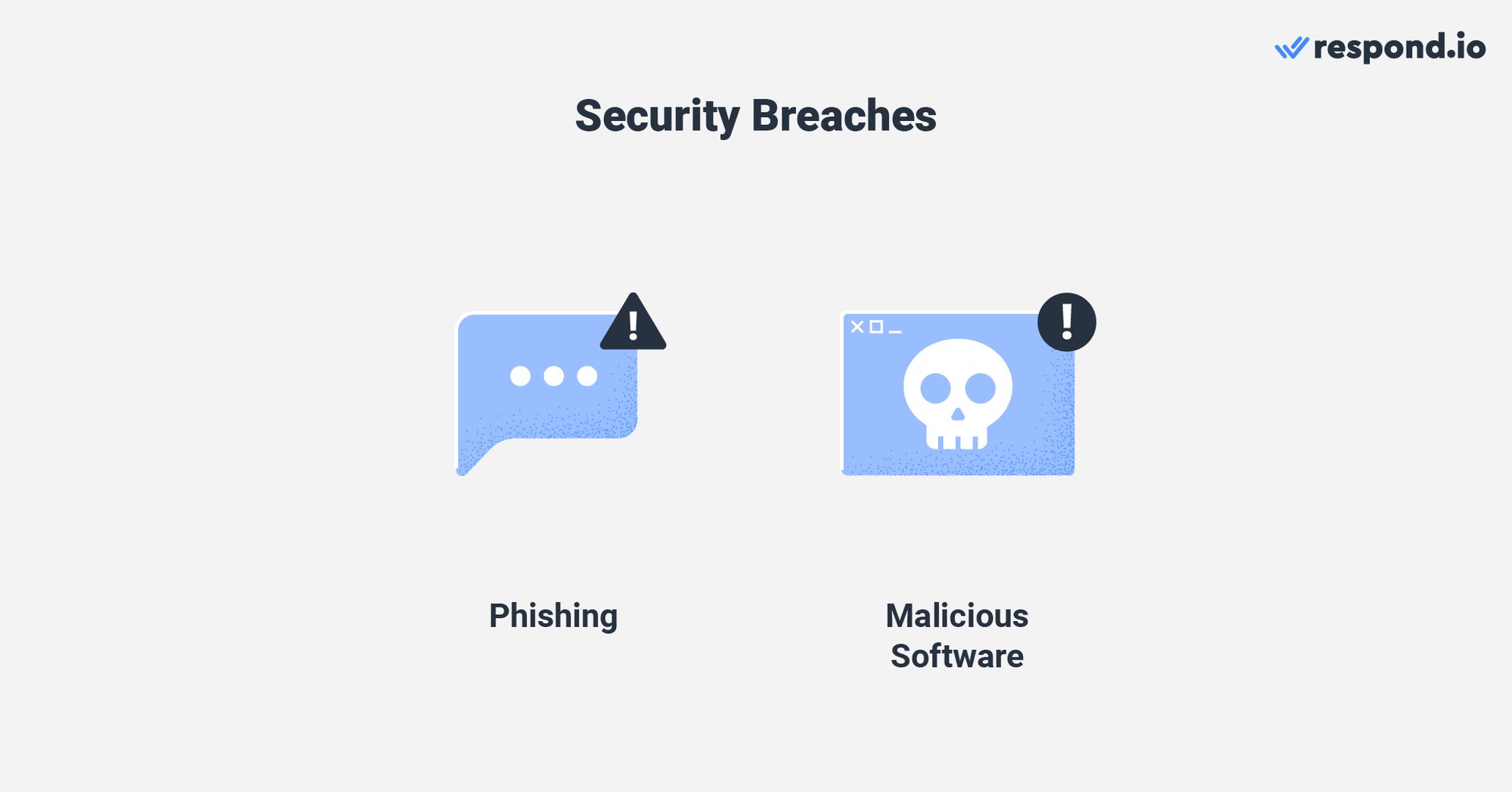
Phishing is a technique where spammers send fraudulent messages that appear to be from trustworthy sources, such as well-known companies. If employees fall for these phishing attempts and unknowingly share sensitive information, it can lead to data breaches and unauthorized access to critical systems.
Spam can also include links that lead to the download of malicious files, such as viruses, spyware, ransomware, or Trojans. Once installed on a computer, they can wreak havoc by stealing sensitive data, disrupting operations, or demanding ransom payments.
Clearly, dealing with spam is crucial. It saves your agents valuable time by reducing the need to interact with spam messages. This allows them to improve their overall response rate as they have more time to focus on legitimate inquiries. Learn how you can implement spam management strategies in the next section.
Turn customer conversations into business growth with respond.io. ✨
Manage calls, chats and emails in one place!
Managing Spam: 5 Strategies to Prevent Unwanted Messages
Good spam management strategies help agents identify and handle spam, reducing its impact on their workflow. But to implement one, you need the right tools to help you, like respond.io.
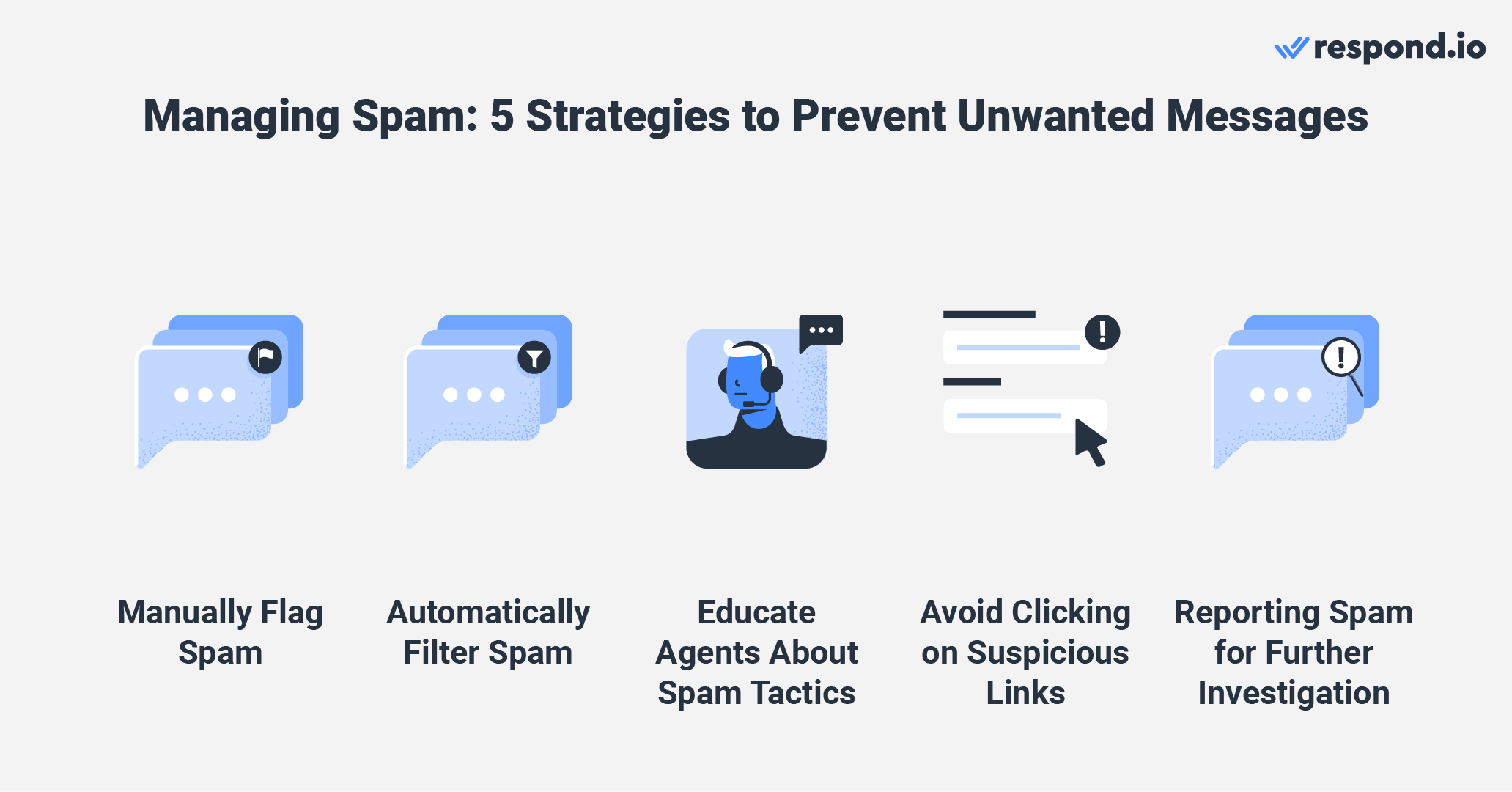
Respond.io is a customer conversation management software that is designed to handle a large volume of customer conversations. It combines communication channels like email, WhatsApp and more into one omnichannel inbox.
This helps your agents handle spam across all channels in one place. Now, let’s take a look at the best spam management strategies with respond.io.
Spam Management: Manually Flag Spam
If a spammer messages you for the first time, you can manually flag them in just a few clicks on respond.io. Setting this up is easy with the Mark Contact as Spam template in the Workflows automation module.
Here’s a guide to creating this spam-flagging shortcut.
1. Select the Workflows module.
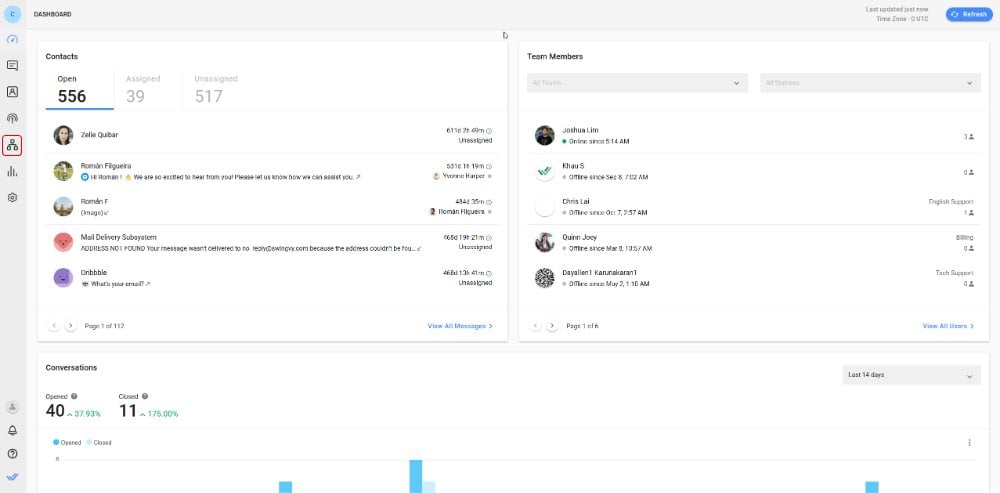
2. Click on + Add Workflow.
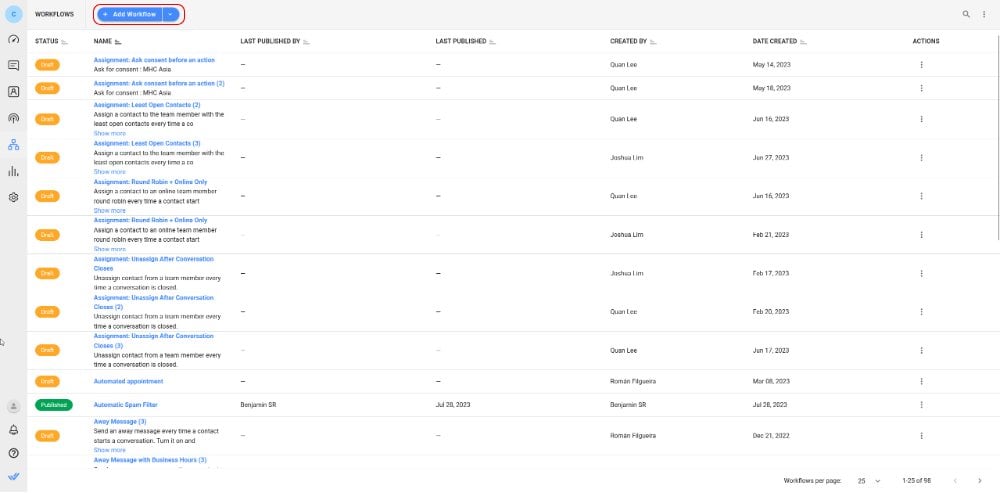
3. Select Mark Contact as Spam Template.
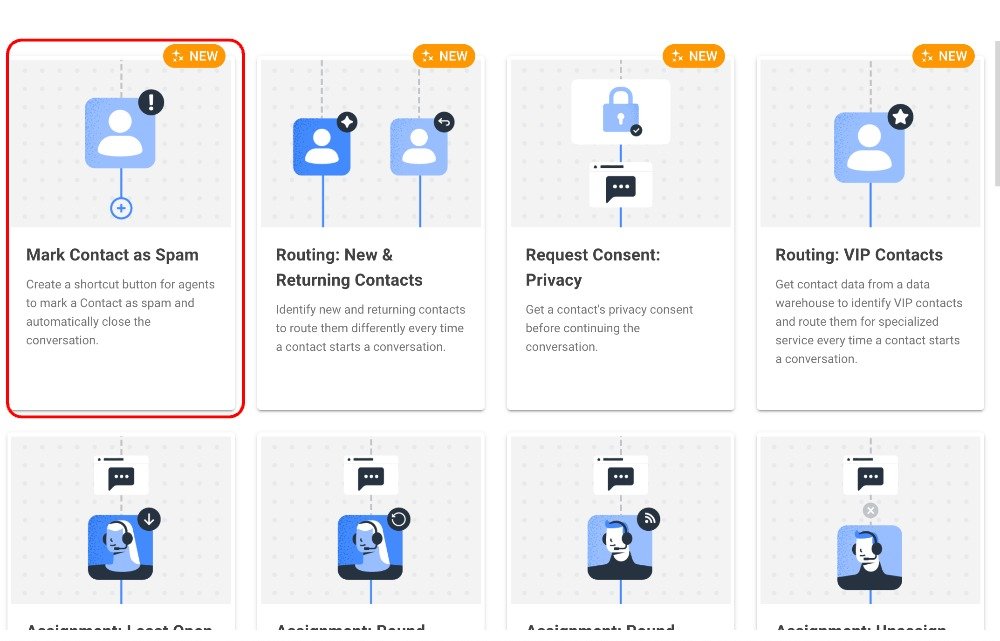
4. Click Use Template.
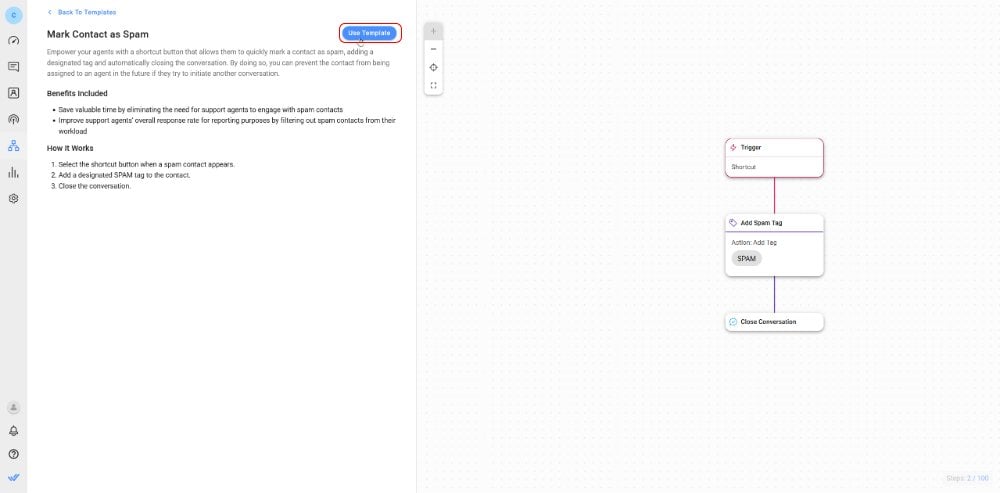
5. Select Publish.
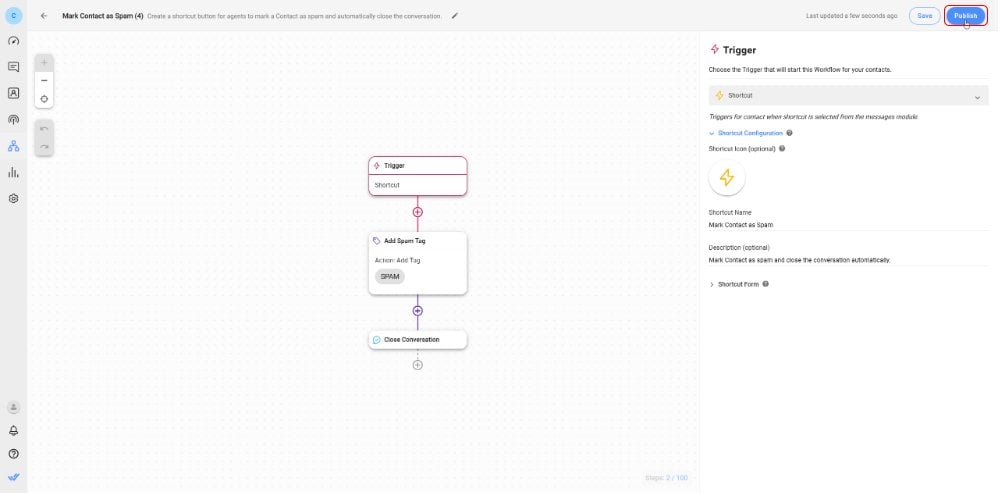
You’re done. Once you’ve tagged a contact as spam, it will close the conversation.
Spam Management: Automatically Filter Spam
You don’t always have to flag returning spam contacts manually. Once a contact has been identified as a spammer, you can include a spam filter in any Workflows chat automation, freeing up agents’ time to engage with real customers instead.
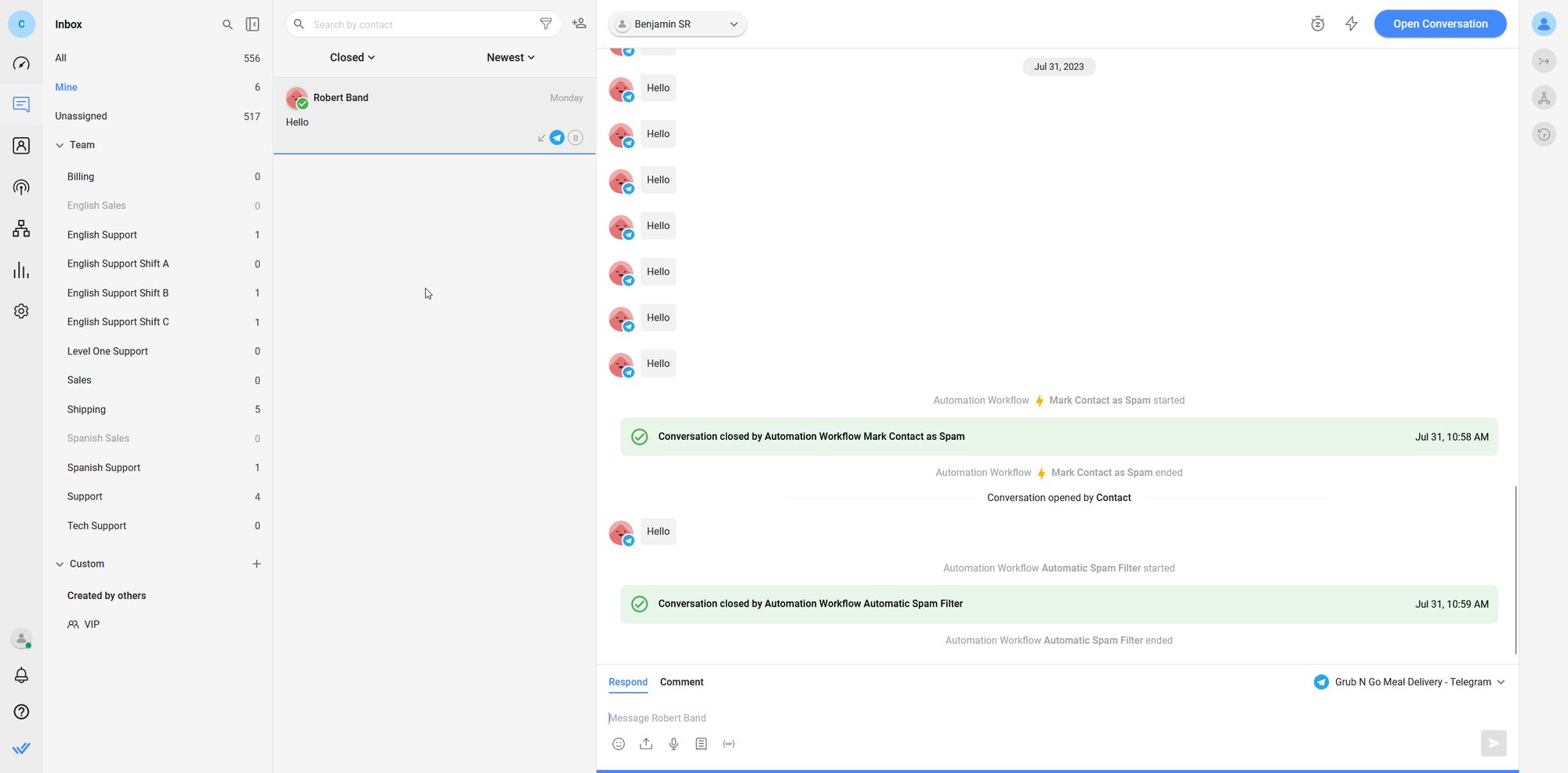
You can set up the automatic spam filter by adding a branch step to an existing or new inbound conversation Workflow.
Spam Management: Educate Agents about Spam Tactics
Help agents stay informed about common spam tactics to recognize and avoid potential spam messages. By providing agents with the necessary knowledge and awareness, businesses can minimize the risk of falling victim to spam-related security threats.
Some examples of spammy or suspicious messages include bad spelling and grammar, promises of unrealistic opportunities and unsolicited attachments.
Spam Management: Avoid Clicking on Suspicious Links
Whether in emails, instant messages or other communication channels, agents need to be cautious about clicking on links from unknown or suspicious senders. This is to safeguard sensitive information and maintain the integrity of your device and network. These links may lead to websites or downloads that compromise security.
Always exercise vigilance and verify the legitimacy of links before interacting with them. Agents should be cautious and proactive in notifying the team lead or relevant authorities about suspicious messages.
Spam Management: Report Spam for Further Investigation
Reporting spam for further investigation is crucial to detect and address a high number of spam conversations effectively. Agents should be encouraged to report spam by tagging spam messages and providing a summary of the conversation with Closing Notes, so managers can easily identify and track spam-related issues.
They provide valuable insights into the nature of spam messages and patterns that might have evaded initial filtering. This information can be used to conduct further investigations to understand the tactics employed by spammers.
With the know-how and tools to manage spam at your disposal, you can help free up your agents’ time to help customers, avoid losses and prevent potential security breaches. Ready to improve the way you handle conversations with your customers? Sign up for a free respond.io trial today.
Turn customer conversations into business growth with respond.io. ✨
Manage calls, chats and emails in one place!
Further Reading
If you enjoyed reading this article, check out our blogs on managing customer conversations below:






































 Electronics
Electronics Fashion & Apparel
Fashion & Apparel Furniture
Furniture Jewelry and Watches
Jewelry and Watches
 Afterschool Activities
Afterschool Activities Sport & Fitness
Sport & Fitness
 Beauty Center
Beauty Center Dental Clinic
Dental Clinic Medical Clinic
Medical Clinic
 Home Cleaning & Maid Services
Home Cleaning & Maid Services Photography & Videography
Photography & Videography
 Car Dealership
Car Dealership
 Travel Agency & Tour Operator
Travel Agency & Tour Operator




